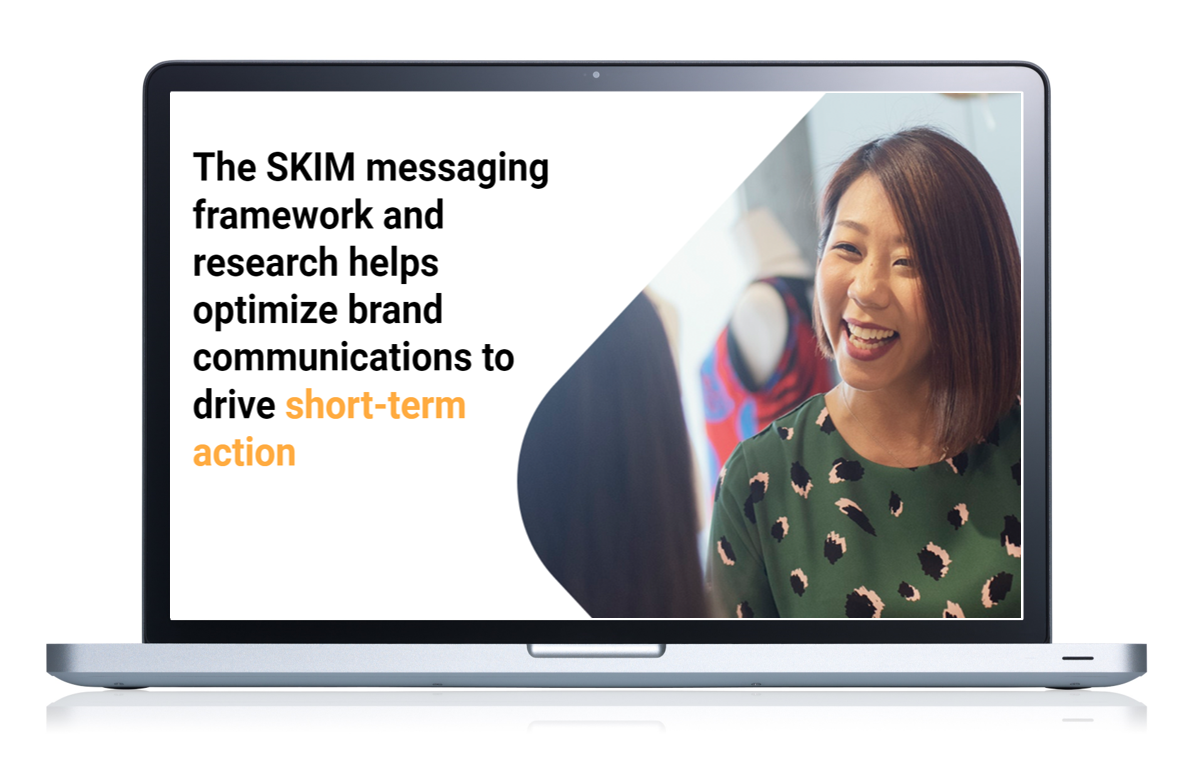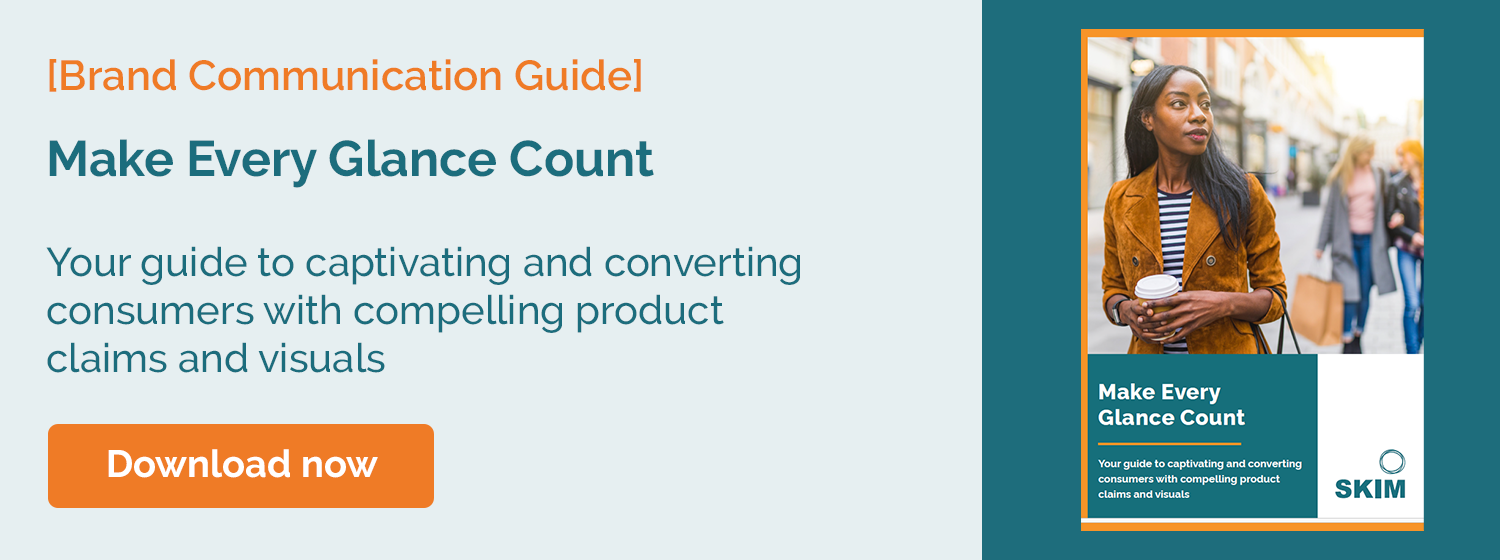How do you best develop compelling B2B messaging that will motivate customers globally – in a crowded online marketplace?
Such was the challenge Google faced when it set out to improve its marketing communications for retailers last year – to make its messaging approach more consistent across its various channels.
In preparing for a global retail marketing campaign, Google realized it needed to make it easier for retailers to understand what the company could offer and why they were the best partner to help them grow.
Sarah Bradley, Consumer Insights Manager at Google, knew research could be a powerful tool to tackle this challenge. “Research with our retail customers is not only helpful to the business but can also drive effective communication so that customers understand what it is we offer and what benefit they’ll get,” she said.
Sarah began her search for a partner with expertise in communications frameworks and best testing practices, which led her to SKIM.
Read on to learn how Google developed winning B2B messaging with the help of SKIM’s proven communications framework.
Why Google embarked on a research-driven messaging journey
 Sarah is part of Google’s Ads Research and Insights team, leading global consumer research for the retail team. Her team supports Google’s Ads Marketing team to help their customers make better decisions grounded in insights.
Sarah is part of Google’s Ads Research and Insights team, leading global consumer research for the retail team. Her team supports Google’s Ads Marketing team to help their customers make better decisions grounded in insights.
“There was broad awareness of our team’s strengths within the marketing organization, so we saw that as an opportunity to drive strategy through research,” Sarah explained. “We were in a position to bring together cross-functional folks – some of whom hadn’t been at the table together before – to truly make more benefit-driven communications.”
Message testing wasn’t new for Google, it’s done quite often for consumer ads and packaging for hardware products.
“The difference is the communications strategy for B2B is a lot more complicated. There are multiple ways in which we engage clients with marketing – from events to email newsletters, to the Think with Google site,” Sarah explained.
“That’s why it’s even more important for us develop a message that resonates with customers and deploy it through all channels consistently.”
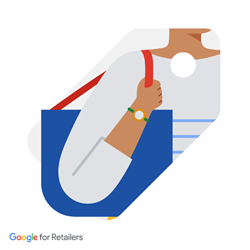 Sarah believed that research could help drive better B2B marketing communications and as a result:
Sarah believed that research could help drive better B2B marketing communications and as a result:
- Earn attention and motivate customers
- Have ownable branding to differentiate Google in a crowded advertising space
- Communicate the intended message which will best resonate with customers
- Strengthen stakeholder management by equipping them to speak with the voice of their customer
- Enable stakeholders to align and make data-driven decisions on global messaging
So, when Google was starting to plan its global retail marketing campaign aimed at mid-market retailers, she turned to SKIM for the B2B communications insights.
The insights approach behind Google’s messaging optimization
“One of our colleagues suggested we partner with SKIM for this project since he was familiar with SKIM’s communications framework,” Sarah said.
We were excited to lend our communications expertise to help improve Google’s B2B messaging. Our team developed a two-phased approach to tackle Google’s communications challenges and prepare for the launch of its global retail campaign.
- Train Google marketers on the proven best practices for message development, generate messages based on those principles and test which ones performed best
- Optimize winning messaging from the first round, further refine, test and launch Google’s winning B2B messaging
Phase 1: Understanding and applying the guiding communications principles for winning claims
In January 2019, Google invited SKIM to lead a message and claims generation workshop for a cross-functional group of 30 sales, marketing and business development team members – with many Googlers dialing in from around the world. In that three-hour session, we dug into Google’s retail customer needs so that we could best position the benefits of working with Google. We then shared the SKIM communications framework, built on our extensive work helping leading brands develop claims that drive short-term action.
This framework is grounded in winning messages containing two key elements:
- A compelling and relevant benefit
- Reason to Believe (RTB) in the brand
We took attendees through an interactive exercise to bring our communications principles and best practices to life.
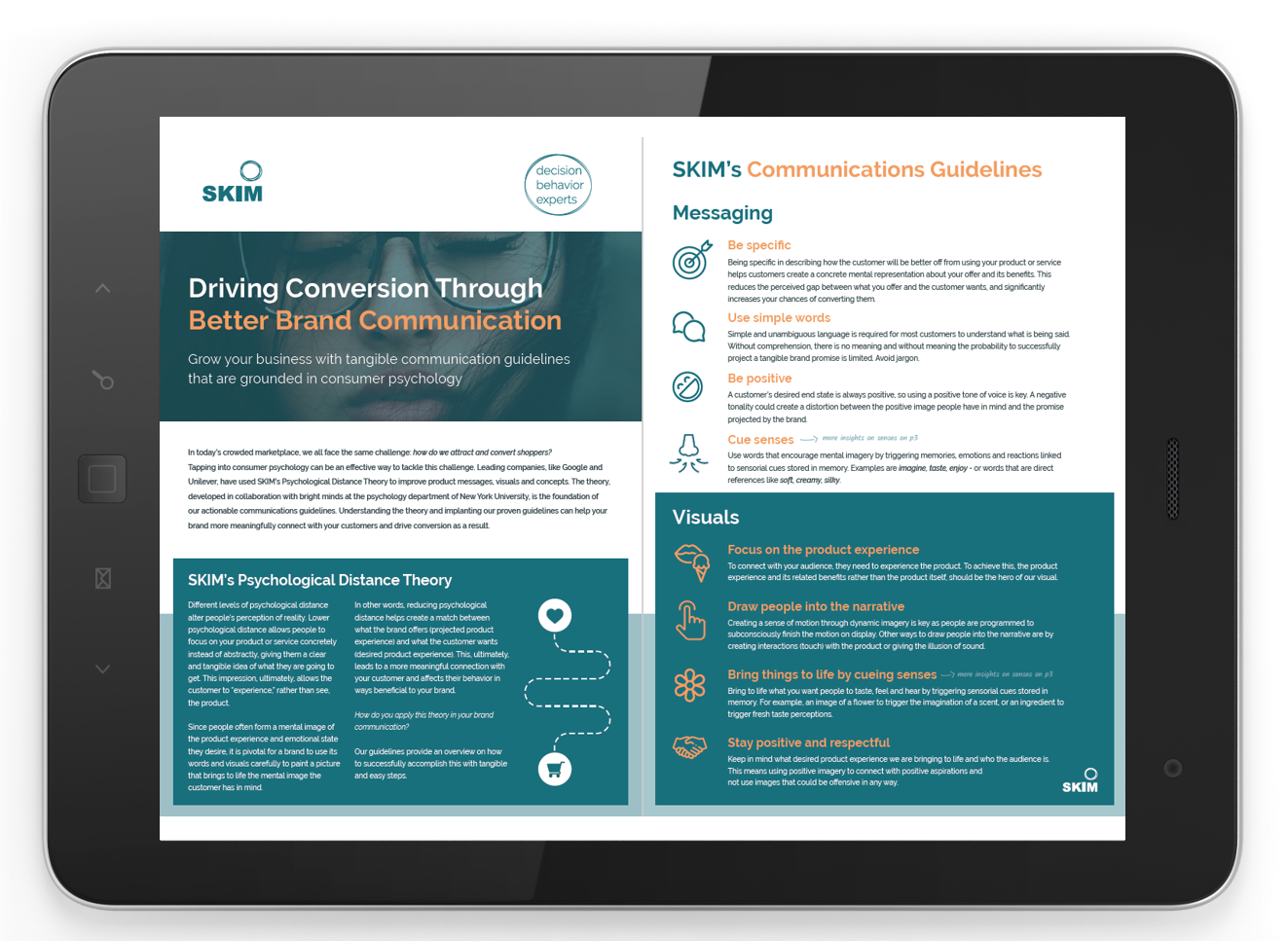

We showed them real examples, from our extensive database of 18,000+ messages tested over the years. Then it was the Google team’s turn to develop B2B retail messages.
“It was at this point that we realized, message generation is hard, and we were not experts. None of us were, but we had SKIM’s framework now that we could get behind,” Sarah explained. “Even some of the skeptics in the room were on board – there was no more ‘gut marketing’ They couldn’t wait to get into field fast enough with these insights.”
After the interactive brainstorm session, we applied our best practices and narrowed down the results to 30 messages. From there the research began.
To help remove any scale bias, this research was done on a global scale, we opted for a choice-based approach. It included:
- Identifying the most motivating messages
- Capturing additional KPIs that contributed to customer’s motivation
- Determining exact words or phrases which were most/least relevant and appealing via text heatmaps
- Uncovering emerging customer groups and themes via a cluster analysis
Phase 1 outcomes: A Google formula for compelling B2B claims
Google received not only an overall prioritization and winning messages, but also how to enhance winning messages or improve messages which didn’t perform as well. We also shared the most optimal combination of messages which would reach Google’s largest retail audience.
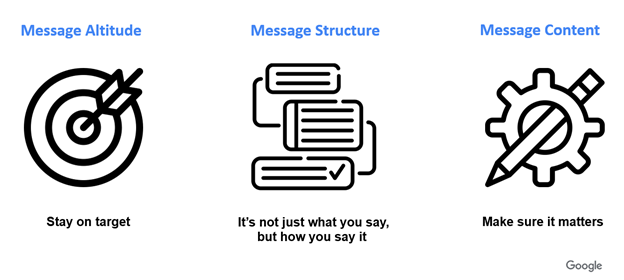 “There were three key learnings from our communications research with SKIM: message altitude, structure and content,” said Sarah.
“There were three key learnings from our communications research with SKIM: message altitude, structure and content,” said Sarah.
- First, we now know exactly how to stay on target: How to lean into a specific benefit for our customers and an ownable “reason to believe” (RTB) for Google. High-level messaging doesn’t work for this audience
- Second, how to structure that message: it’s not just what you say, it’s how you say it. For example, leading with a benefit first and pairing it with a unique Google RTB was most motivating for retailers
- Third, what content we should lead with: we learned which message themes, benefits and features were most relevant to our audience
Phase 2: Further refining Google’s B2B messaging for greatest impact
After the first phase, Google was armed with a clear understanding of the message structure, benefits and RTBs that were most motivating. However, based on the insights we uncovered, we saw an opportunity for Google to combine winning elements of the original messages and test these new options.
“We saw from SKIM’s first analysis that some benefits performed really well but were brought down by other elements of the overall message, such as jargon.” said Sarah. “So, we continued the messaging journey with a second phase of research with SKIM.”
This round we focused on further refinement and uncovering the optimal combination of retailer benefits and Google RTBs.

We opted for a choice-based approach again, this time using our conjoint expertise. The conjoint analysis allowed us to test the various combinations of the winning benefits and the winning RTBs. By testing messages as a whole and varying elements, we could understand what was really driving message performance.
The result was a winning Google for Retail message which significantly outperformed the original one from phase 1. This message was more appealing, more relevant for retailers and increased their willingness to partner with Google.
Insights into action: Activating Google’s new retail messaging
“Now we had a winning message that was backed by data from our customers. Global consistency brings clarity to the retailer,” Sarah shared. “And that was a big point for us, because we wanted to move the needle on our goal.”
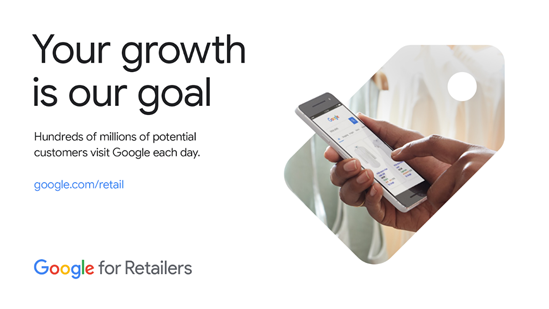 According to Sarah, these insights armed their sales team and Google marketers to go out and talk specifically about how Google could add value to retail partnerships.
According to Sarah, these insights armed their sales team and Google marketers to go out and talk specifically about how Google could add value to retail partnerships.
Google has since deployed their winning messaging across all marketing communications channels – from its Google for Retail site, to global events, speaking opportunities, sales communications and playbooks. The result is a consistent, global, message for our retail audience.
Sarah also shared another positive outcome of this project: “Since the retail messaging exercise, that team of 30 folks who gathered for the initial brainstorm now serve as advocates for this research-driven approach to messaging!”
In the year following our first message test for Google, we’ve done more than a dozen studies on the B2B side, across 15 markets, across verticals, and across different ad products.
“Our Ads Research & Insights team may be small,” Sarah noted. “But the impact we’re having – bringing benefit-driven B2B communications across Google’s entire marketing organization – is mighty!”
Want to develop more impactful communications for your B2B or B2C audience?  us to learn how to create winning messaging with SKIM’s proven communications framework.
us to learn how to create winning messaging with SKIM’s proven communications framework.


